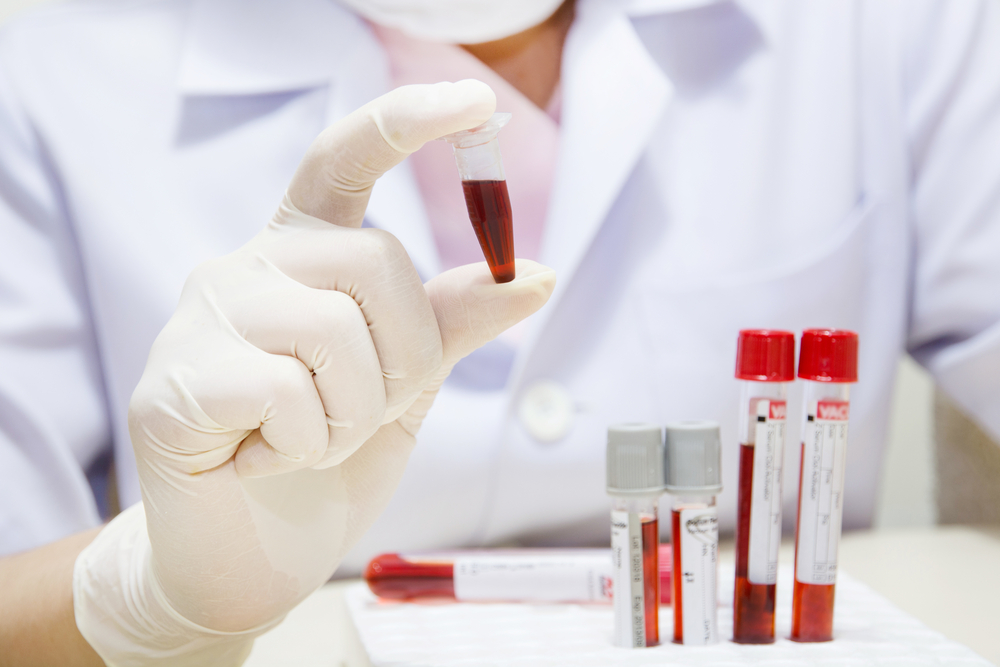Serum Levels of 4 Proteins Enable Monitoring of Sarcoidosis Activity, Study Reports

Measuring the serum levels of the proteins ACE, YKL-40, CRP, and sIL-2R may enable clinicians to monitor disease activity in sarcoidosis patients, according to researchers from Turkey.
Their study, “YKL-40, Soluble IL-2 Receptor, Angiotensin Converting Enzyme and C-Reactive Protein: Comparison of Markers of Sarcoidosis Activity,” was published in the journal Biomolecules.
The proteins ACE (angiotensin-converting enzyme), which induces the generation of biologically active angiotensin II — which is involved in blood pressure regulation and body fluid balance — and sIL-2R (soluble IL-2 receptor) — which is implicated in the immune response — are the most commonly used serum markers of sarcoidosis.
However, no single marker with clear prognostic value is available.
The activity of adenosine deaminase (ADA), an enzyme that breaks down a molecule called adenosine, is increased in patients with sarcoidosis and has been proposed as a marker of disease activity.
Also, research in sarcoidosis patients reported that CRP (C-reactive protein) — produced in the liver, and in higher levels when inflamed — response was detected in most cases, but limited studies have used high sensitivity CRP (hs-CRP) detection in this disorder.
Scarce information is also available about blood serum levels in sarcoidosis patients of another potential marker, glycoprotein — a protein with a sugar group attached, called YKL-40 (chitinase-3-like protein 1).
The diagnosis of sarcoidosis is challenging and may require an invasive tissue biopsy. As such, having noninvasive methods of diagnosis with proven specificity would be beneficial.
Aiming to address this gap, a research team from Istanbul, Turkey, evaluated the levels of YKL-40, sIL-2R, ACE, hs-CRP, neopterin concentrations (a marker of immune activation), and ADA activity, in the serum of chronic sarcoidosis patients as potential disease markers.
The study included 20 patients with active sarcoidosis (16 women, mean age 45.15); 39 with inactive disease (24 women, mean age 42.4); and 25 controls (13 women, mean age 46.12).
The differentiation of active and inactive disease — which determines treatment decisions and clinical followup — was based on clinical, physiological, and radiological criteria.
Results showed that both active and inactive sarcoidosis patients had significantly higher serum levels of neopterin, YKL-40, sIL-2R, hs-CRP, and ACE, as well as more ADA, than controls in the study.
Also, levels of hs-CRP, YKL-40, sIL-2R, and ACE were increased in active sarcoidosis patients compared to inactive patients, suggesting they could help discriminate between active and inactive disease states.
The data also showed that, in patients with inactive disease, the higher the levels of hs-CRP, the older the patients.
Similar positive correlations were observed between ACE and sIL-2R, and ACE and YKL-40. Also, the higher the levels of sIL-2R, the greater the levels of YKL-40.
As for patients with active sarcoidosis, strong positive correlations were seen between sIL-2R and YKL-40; ACE and YKL-40; ACE and sIL; and sIL-2R and YKL-40.
Levels of hs-CRP were only moderately associated with those of YKL-40, sIL-2R, and ACE in both patient groups.
A type of assessment called ROC analysis showed that sIL-2R levels had a very good diagnostic value in differentiating between patients and controls. Results of ADA, ACE, neopterin, and YKL-40 were also positive.
And hs-CRP was found to be the best marker for differentiating between active and inactive phases of sarcoidosis. Specifically, if hs-CRP is greater than 2 mg/L, the risk of disease activity increases by nearly 47 times.
YKL-40, sIL-2R, and ACE also enabled differentiation. But ADA and neopterin did not provide markers for differentiation between active and inactive sarcoidosis.
“In conclusion, our results indicate that serum YKL-40, sIL-2R, ACE, and hs-CRP concentrations may be useful panel marker for monitoring sarcoidosis disease activity,” the researchers wrote. However, they cautioned that these results need to be confirmed in larger studies and in at-risk populations.






